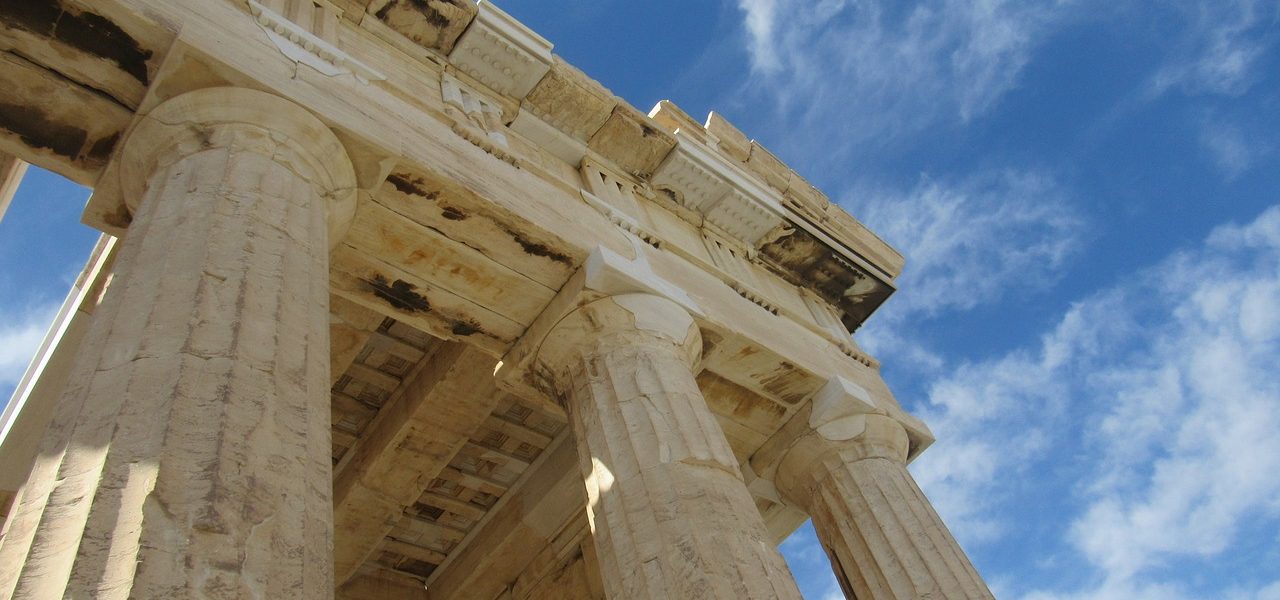Home › Forums › General History Chat › Cool Bronze Age structure in Ireland
- This topic has 4 voices and 7 replies.
-
AuthorPosts
-
 skiguyModerator
skiguyModeratorThis is one of the coolest things in Ireland.http://www.galway.net/export/sites/GalwayNet/tourism/visit/aran/images/dunaonghus-aerial.jpgDo you think this was originally built as a full circle and the cliff gave way because of global warming? (if only they reduced their carbon output back then ::) )Quiz: Why, without resarching, are there all those rocks on the ground outside the walls?
 PhidippidesKeymaster
PhidippidesKeymasterIf it was a full circle then much of the cliff would have fallen into the sea. Is this likely? I'm not sure. It might have been a half-circle as well. Depending on which “rocks” you're referring to, the ones on the ground forming the perimeter wall could be for sheep or goats, seeing how low they are. I tried to find that structure here and wasn't sure I could:http://flickr.com/photos/tags/dunaonghus/
 skiguyModerator
skiguyModeratorThe only reason I say the cliffs may have collapsed is because the walls of the fort go right up to the edge. In 4-8,000 years, it wouldn't be that unfeasible for cliffs to erode like that. Plus, most of the other ring-forts are completely circular.The stones on the outside perimeter are called chevaux-de-frise. According to this website and a few others, they were used as a defensive measure.
Aside from the walls, one mode of defense is a band of stones set in the ground. Called a chevaux-de-frise, the stones are closely packed, set at an angle and intended to thwart an attack up the slope.
 PhidippidesKeymaster
PhidippidesKeymasterI think, though, that a dating of 4000-8000 B.C. for the walls would pre-date the Bronze Age.See http://en.wikipedia.org/wiki/Bronze_Age
Beaumaris
ParticipantGive it up people, global warming or not, erosion happens. Check out Tintagel castle in Cornwall http://www.english-heritage.org.uk/server/show/nav.15393/chosenImageId/1 This place will fall into the sea too some day.
 skiguyModerator
skiguyModeratorI think, though, that a dating of 4000-8000 B.C. f
4000-8000 years ago is what I meant.
 scout1067Participant
scout1067Participant4000-8000 years ago is 2000-6000 B.C. That is prehistoric. That is quite an advanced structure to be of that age. That would make it about the age of Stonehenge, which despite its immense size and precise positioning, is still quite primitive in its technique of construction.
 skiguyModerator
skiguyModeratorPlease change topic to “Cool OLD structure in Ireland” ;D
 scout1067Participant
scout1067ParticipantI think you are correct though. The fort or structure has the looks of something that was once a tower or bailey of a keep or donjon and the cliff face has since eroded, leaving what we see today. It does not even need to be thousands of years old. The seas around Ireland are very rough and it could be as young as 700-1000 years and if it was built close enough to the cliff erosion could have already done its work. Look at how fast the cliffs in parts of California have eroded, the same thing happens in other parts of the world too. That cliff looks precipitous enough that wave action could easily undermine a small part of the cliff causing a larger section to collapse.
-
AuthorPosts


